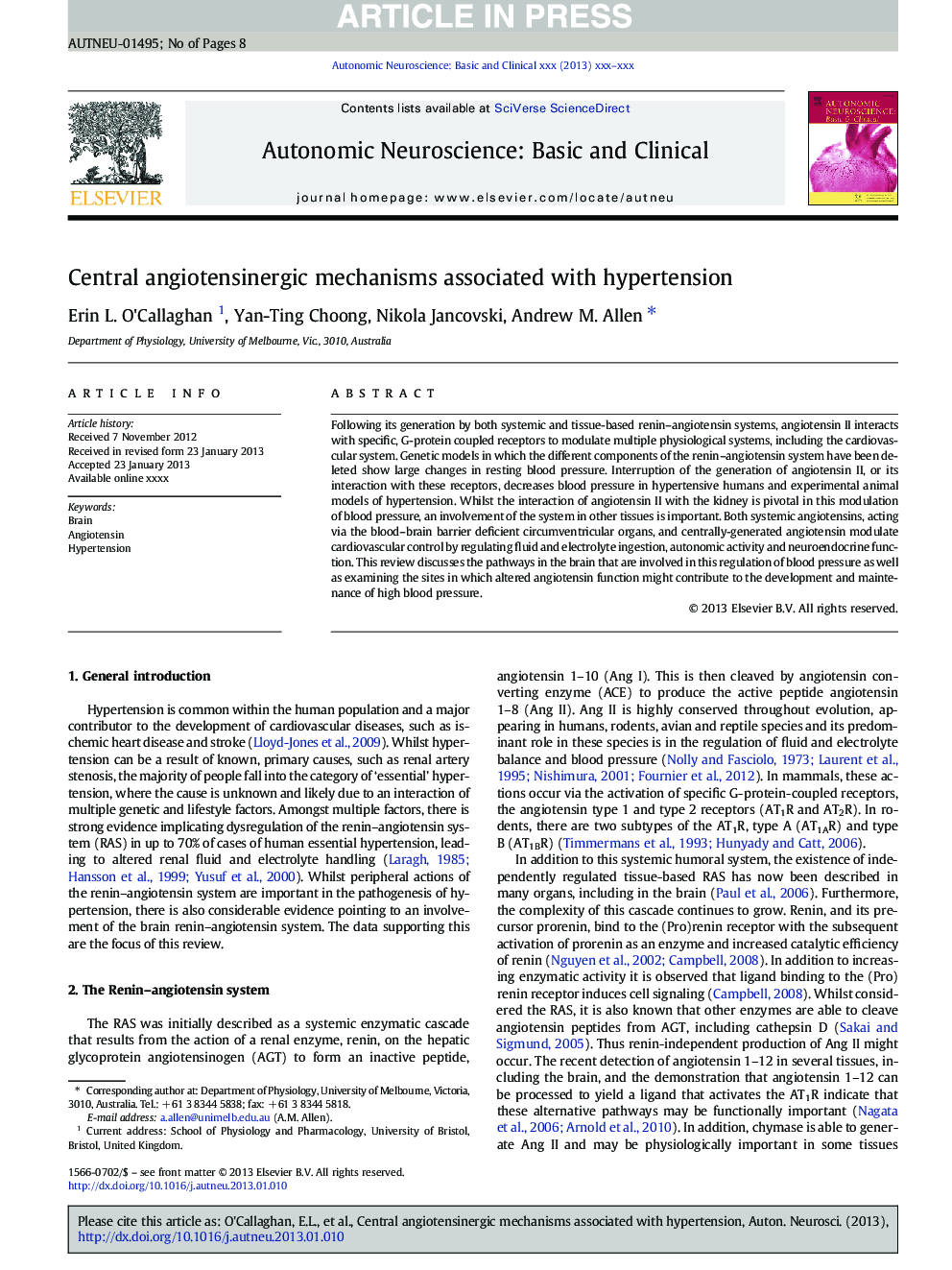| Article ID | Journal | Published Year | Pages | File Type |
|---|---|---|---|---|
| 6004489 | Autonomic Neuroscience | 2013 | 8 Pages |
Abstract
Following its generation by both systemic and tissue-based renin-angiotensin systems, angiotensin II interacts with specific, G-protein coupled receptors to modulate multiple physiological systems, including the cardiovascular system. Genetic models in which the different components of the renin-angiotensin system have been deleted show large changes in resting blood pressure. Interruption of the generation of angiotensin II, or its interaction with these receptors, decreases blood pressure in hypertensive humans and experimental animal models of hypertension. Whilst the interaction of angiotensin II with the kidney is pivotal in this modulation of blood pressure, an involvement of the system in other tissues is important. Both systemic angiotensins, acting via the blood-brain barrier deficient circumventricular organs, and centrally-generated angiotensin modulate cardiovascular control by regulating fluid and electrolyte ingestion, autonomic activity and neuroendocrine function. This review discusses the pathways in the brain that are involved in this regulation of blood pressure as well as examining the sites in which altered angiotensin function might contribute to the development and maintenance of high blood pressure.
Keywords
Related Topics
Life Sciences
Neuroscience
Cellular and Molecular Neuroscience
Authors
Erin L. O'Callaghan, Yan-Ting Choong, Nikola Jancovski, Andrew M. Allen,
